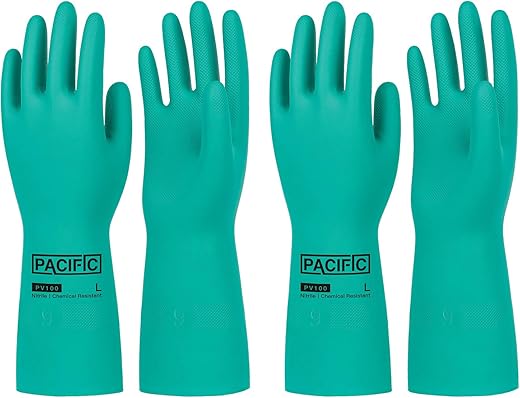







The Essential Guide to Chemical Gloves: Your Best Defense Against Hazardous Materials
When it comes to handling chemicals, safety should never be an afterthought. Whether you’re a professional in a lab or a DIY enthusiast tackling home projects, chemical gloves are your first line of defense against harmful substances. But with so many options available, how do you choose the right pair? In this guide, we’ll explore the types of chemical gloves, their features, and how to select the best ones for your needs.
Understanding Chemical Gloves
Chemical gloves are designed to protect your hands from exposure to hazardous materials. These gloves are constructed from materials that resist penetration by specific chemicals, thus providing an essential barrier during handling. However, not all gloves are created equal. Different materials offer varying levels of protection against different types of chemicals. Think of it like choosing the right tool for a job; using the wrong glove can be just as dangerous as not wearing one at all.
Types of Chemical Gloves
There are several types of chemical gloves, each suited for specific tasks and environments:
1. Nitrile Gloves
Nitrile gloves are made from synthetic rubber. They are latex-free, making them a great choice for those with allergies. Known for their puncture resistance, they are ideal for handling oils, solvents, and a variety of chemicals. Imagine them as the trusty all-rounders of the glove world; reliable and versatile.
2. Latex Gloves
While latex gloves offer excellent dexterity and a snug fit, their use is often limited due to potential allergies. They work well for biological hazards and light chemical tasks. However, if you’re dealing with harsh chemicals, you might want to reconsider as they can degrade quickly.
3. PVC (Polyvinyl Chloride) Gloves
PVC gloves are generally thicker and provide good protection against mild acids and caustics. They are less flexible than nitrile or latex but can be a cost-effective choice for low-risk tasks. Think of PVC gloves as the workhorses—durable and dependable, but not the most agile.
4. Neoprene Gloves
Neoprene gloves are known for their resistance to a wide range of chemicals, including oils, acids, and solvents. They also provide excellent thermal insulation. If you need gloves that can withstand both heat and chemicals, neoprene is your best bet.
Choosing the Right Gloves
Selecting the right chemical gloves is crucial for your safety. Here are some factors to consider:
1. Chemical Compatibility
Always check the glove’s compatibility with the chemicals you’ll be handling. Most manufacturers provide a chemical resistance chart—use it! Just as you wouldn’t wear a swimsuit to a snowstorm, you shouldn’t use gloves that can’t withstand the specific hazards you face.
2. Thickness and Length
The thickness of the glove will affect its resistance to chemicals as well as its dexterity. Thicker gloves tend to offer better protection but may sacrifice a bit of sensitivity. Additionally, longer gloves provide extra protection for your forearms, which is beneficial in certain environments.
3. Comfort and Fit
Gloves should fit snugly without being too tight. An ill-fitting glove can lead to hand fatigue, increasing the likelihood of accidents. Look for gloves with ergonomic designs to ensure comfort during extended wear.
4. Certifications
Ensure that the gloves meet industry standards. Look for certifications such as ASTM or EN388 to guarantee that the gloves have undergone rigorous testing for safety and performance.
Maintaining Your Chemical Gloves
Once you’ve invested in a good pair of chemical gloves, it’s essential to maintain them properly. Always inspect your gloves for any signs of wear or damage before use. After handling chemicals, clean your gloves according to the manufacturer’s instructions, and store them in a cool, dry place away from direct sunlight. Think of it as caring for a pair of expensive shoes; proper maintenance will extend their life significantly.
Conclusion
Chemical gloves are an indispensable tool in any setting where hazardous materials are present. By understanding the various types of gloves available and knowing how to choose the right pair, you can ensure your safety while working with chemicals. Remember, your hands are your most valuable tools—protect them well!
FAQs
What are the best chemical gloves for handling solvents?
Nitrile gloves are typically the best choice for handling solvents due to their excellent puncture resistance and chemical compatibility.
Can I reuse chemical gloves?
It depends on the type of glove and the chemicals handled. In general, single-use gloves should not be reused, while some thicker gloves can be cleaned and reused if they show no signs of damage.
How do I know if my gloves are still effective?
Inspect your gloves for any signs of wear, such as tears or discoloration. If you notice any damage, it’s best to replace them to ensure maximum protection.
